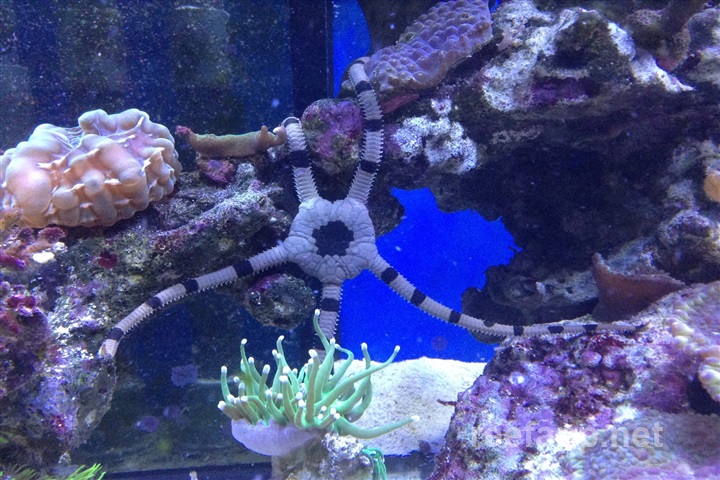Ophiolepis superba

| Latin name | Ophiolepis superba |
|---|---|
| Local name | Banded Brittle Sea Star |
| Family | Asteroidea - Ophiolepis |
| Origin | West Indian Ocean, The Red Sea |
| Max length | 20 cm (7.9") |
| Minimum volume |
200 l (53 gal) |
|---|---|
| Hardiness |
Average |
| Suitable for aquarium |
Suitable for most aquarium |
| Reef safe |
Often reef safe |
| Aggressiveness | Peaceful |
| Recommended |
Detritus Microalgea (Eg. spirulina) Small crustaceans (Krill, mysis, artemia...) |
|---|
This spicies might be a threat to smaller fishes.
Sea stars can be an essential part of a clean up crew, as many species live of algae and detritus.
Some species are even quite colorful.
Sea stars should not be kept in tanks with high levels of nitrate or phosphate, as they are more sensitive than most fish.
They might begin to "erode" if the water quality is low or if not provided with enough food.
Many species might be able to find enough food on their own in the aquarium, but if they show signs of starvation, one should feed them fish pellets or similar.
Some species are sensitive to air and changes in salinity, so be careful when moving and acclimating sea stars.
Most sea stars in the trade are harmless and beneficial, but one should be careful when purchasing species with spines, as these are often predatory.
Ronald L. Shimek. 2004. Marine Invertebrates (PocketExpert Guide) - TFH Publications / Microcosm Ltd. - (English)
Philip A. Purser. Aquarium Sea Stars - Fish Channel - (English)
Richard Aspinall. 2015. Sea Stars for the Marine Aquarium - Tropical Fish Hobbyist Magazine - (English)

